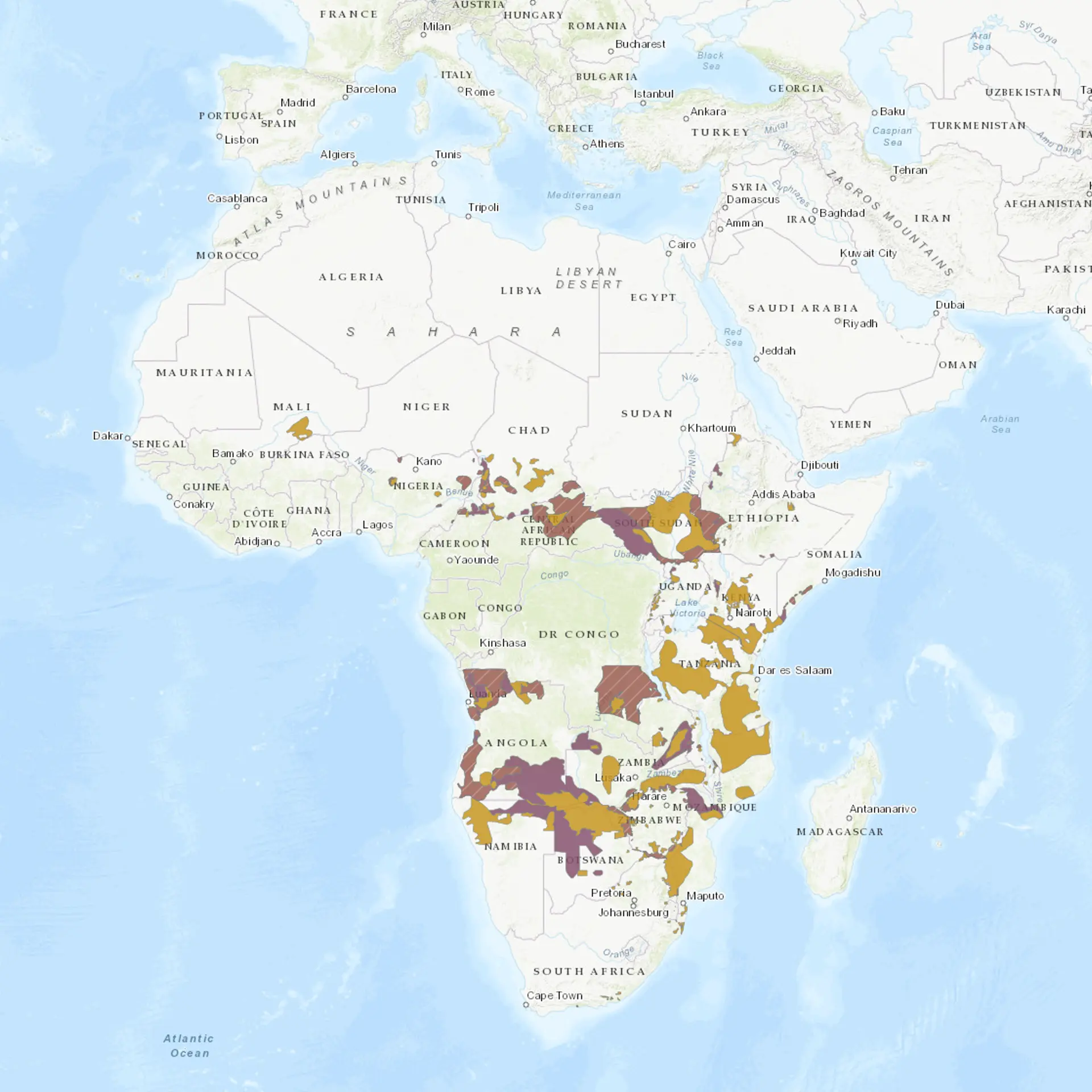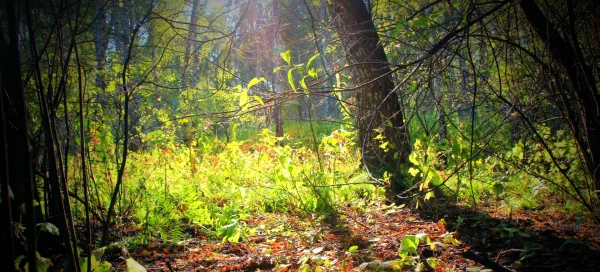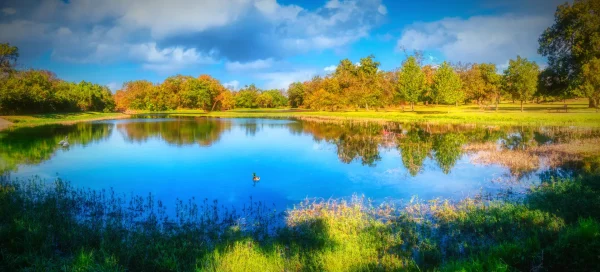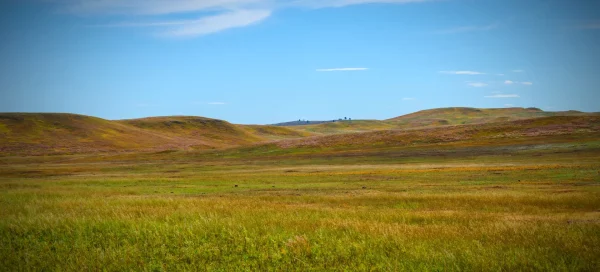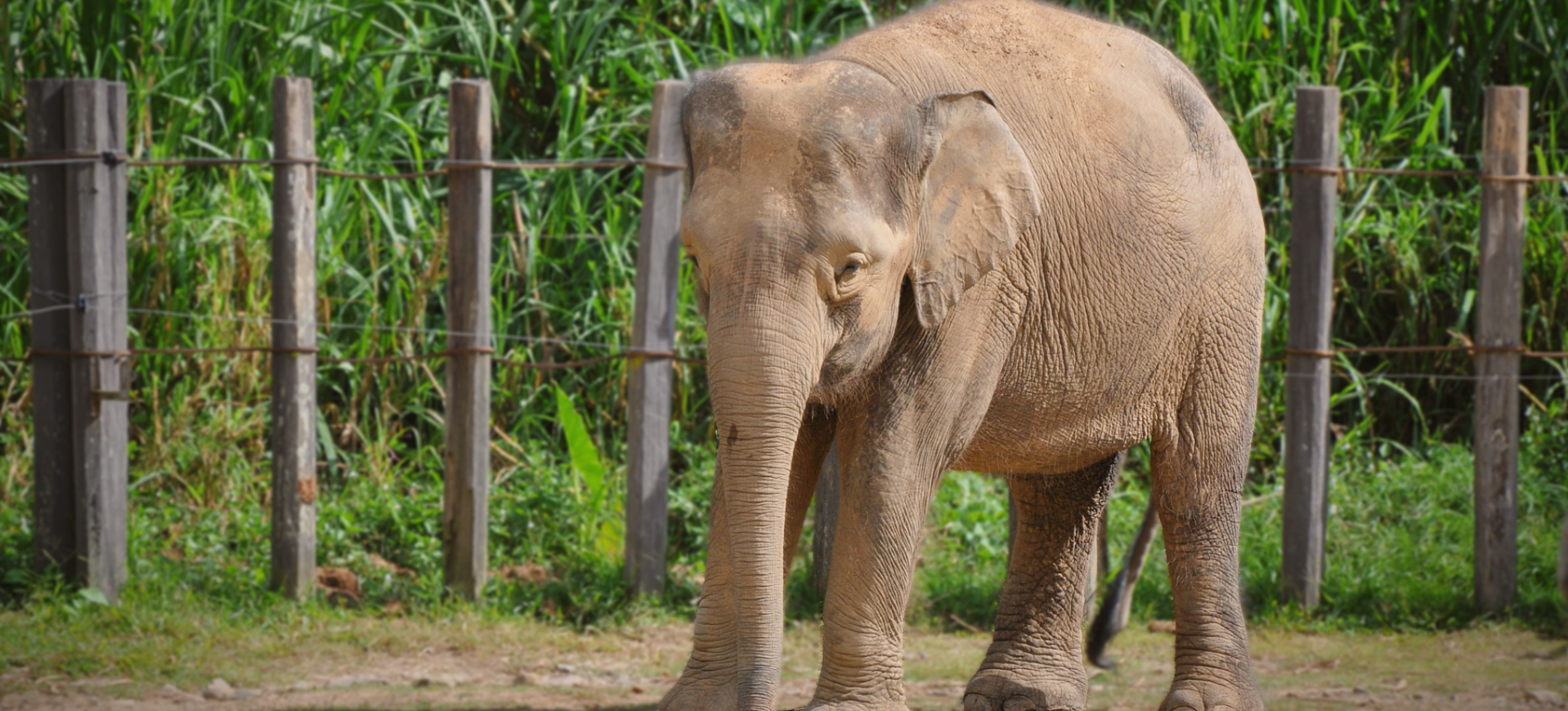Overview
The African Savanna Elephant, scientifically known as Loxodonta africana, is the largest terrestrial animal on Earth, renowned for its immense size, large ears resembling the African continent’s shape, and long, curved tusks. These majestic creatures are key species in their habitats, playing a crucial role in maintaining the ecological balance by modifying their landscape to benefit other species. They inhabit various ecosystems across sub-Saharan Africa, ranging from savannas, grasslands, and forests to deserts, adapting remarkably to different environmental conditions. Savanna elephants are highly social animals, forming complex matriarchal societies that consist of female-led herds, which include mothers, daughters, sisters, and their offspring. At the same time, males tend to lead more solitary lives or form loose bachelor groups.
Elephants communicate through a sophisticated system of vocalizations, body language, and infrasound, some frequencies below the range of human hearing. These communications facilitate the coordination of their social and reproductive behaviors over large distances. Their diet is herbivorous, consisting mainly of grasses, leaves, bark, and fruit, which they consume in large quantities to sustain their massive bodies. Elephants are also known for their remarkable intelligence, displaying behaviors such as grief, learning, artistry, and using tools.
The African Savanna Elephant faces significant threats from habitat loss due to agricultural expansion and human settlement, conflict with humans, and, most critically, poaching for ivory and meat. These pressures have led to declining numbers, making conservation efforts vital for their survival. The species’ ability to traverse long distances makes them important seed dispersers, contributing to the health and regeneration of their ecosystems and demonstrating the interconnectedness of their survival with the biodiversity of their habitats.
Taxonomy
Kingdom
Phylum
Class
Order
Family
Genus
Species
Type
Current distribution:
The African Savanna Elephant, a symbol of the African wilderness, now finds its existence marred by fragmentation, confining its once vast distribution to pockets of protected areas. National parks and reserves have become sanctuaries for the largest populations of these gentle giants, safeguarding them from the encroaching dangers of human activities. Countries like Botswana, Tanzania, Zimbabwe, Kenya, and South Africa are key strongholds for the species, where efforts to preserve their numbers are most concentrated, highlighting the importance of these protected areas in the species' survival.
In response to the challenge of habitat fragmentation, conservationists have been innovating solutions to ensure the continuity of elephant populations across their natural range. Establishing wildlife corridors has emerged as a vital strategy, offering elephants safe passage between isolated habitats. These corridors are crucial for maintaining genetic diversity, ensuring access to a broader range of resources, and allowing for the natural migratory behaviors essential for the ecological balance of the regions they traverse, reinforcing the interconnectedness of conservation efforts across international borders.
Physical Description:
African Savanna Elephants are notable for their imposing stature, with males standing up to 13 feet tall at the shoulder and weighing as much as 14,000 pounds. Females are smaller but still formidable in size. Their skin is gray and wrinkled, providing protection from the sun and heat. The elephants’ large ears serve not only for hearing but also as a cooling mechanism, as blood flowing through the ear veins is cooled by air movement. The tusks in both males and females are actually elongated incisors, growing throughout the elephant’s life, and are used for digging, foraging, and defense.
The trunk is a highly versatile and sensitive organ that combines the functions of the nose and upper lip and is capable of powerful movements and delicate tasks, such as picking up a small object. The trunk has two finger-like projections at the end, which are used for grasping. The feet of the Savanna Elephant are large and circular, helping to distribute their weight and allowing them to walk silently despite their size.

Lifespan: Wild: ~60 years || Captivity: ~80 years

Weight: Male: 12,000-14,000 lbs (5,443-6,350 kg) || Female: 5,000-7,000 lbs (2,268-3,175 kg)

Length: Male: 300-420 in (762-1066 cm) || Female: 240-350 in (609-889 cm)

Height: Male: 120-130 in (304-330 cm) || Female: 90-110 in (228-279 cm)

Top Speed: 25 mph (40 km/h)
Characteristic:
Native Habitat:
African Savanna Elephants roam across the vast landscapes of sub-Saharan Africa, making their homes in an array of ecosystems that include the dense canopies of forests, the expansive grasslands, the open savannas, and the harsh conditions of deserts. These environments offer the diverse vegetation necessary to sustain the elephants’ large bodies and varied diets. Essential to their survival, water sources within these territories are sought after for drinking and bathing, which helps the elephants regulate their body temperature and maintain skin health.
However, the ever-increasing expansion of human populations and activities into elephant habitats has led to significant habitat fragmentation. This disruption limits the elephants’ access to traditional migration routes, vital water sources, and adequate foraging grounds. The consequent loss of contiguous, suitable living space is a major obstacle to the conservation of African Savanna Elephants, affecting their natural behaviors, breeding patterns, and food access, and underscores the urgent need for integrated conservation strategies that address both the needs of these majestic creatures and the communities that share their landscapes.
Biogeographical Realms:
Continents:
Countries:
Diet:
Diet & Feeding Habits:
The African Savanna Elephant is a herbivore with a diet that includes grasses, leaves, bark, and fruits. They consume up to 300 pounds of vegetation daily, requiring them to spend most of their time foraging. Elephants play a significant role in their ecosystems by controlling plant populations, creating spaces for new growth, and dispersing seeds through their dung.
During dry seasons, elephants dig for water, creating waterholes that other animals can use. They prefer certain types of food depending on the season, which can lead to them traveling long distances to find these resources. This search for food and water sources often brings them into conflict with humans, especially in areas where their habitats overlap with agricultural land.
Mating Behavior:
Mating Description:
African Savanna Elephants have a polygynous mating system where dominant males, or bulls, mate with multiple females. Males enter a state known as “musth,” a period of increased testosterone levels that makes them more aggressive and significantly more attractive to females. During this time, males will search for estrous females and compete with other males for access to them.
Females usually give birth to a single calf after a gestation period of about 22 months, the longest of any land mammal. Calves weigh about 260 pounds and can stand and walk shortly after birth. The herd’s social structure provides protection and education for the calves, with all members of the herd, especially the matriarch and other females, playing a role in their upbringing.
Reproduction Season:
Birth Type:
Pregnancy Duration:
Female Name:
Male Name:
Baby Name:
Social Structure Description:
The African Savanna Elephant exhibits a complex social structure that is predominantly matriarchal, highlighting the critical role females play within their societies. Herds are composed mainly of closely related females and their young, forming tight-knit family groups that traverse the vast landscapes of sub-Saharan Africa. At the helm of these groups is the matriarch, often the oldest and wisest female, who is responsible for guiding the herd. Her duties include making pivotal decisions about the herd’s movements in search of food, water, and safe habitats and imparting crucial survival knowledge to the younger generations. This matriarchal leadership ensures the safety and well-being of the herd, leveraging the matriarch’s extensive experience and memory, especially in navigating vital water sources during droughts.
As for the males, their journey within the social fabric of African Savanna Elephant society takes a divergent path upon reaching puberty. At this stage, young males are typically encouraged to leave the safety of the maternal herd to prevent inbreeding and to establish their place within elephant society. Some opt for a solitary existence, roaming the wilderness alone. In contrast, others may form associations with fellow bachelors, creating groups that offer companionship and a semblance of the social structure they left behind. These bachelor groups serve as a transitional phase, where males can grow and hone their strength and social skills until they are ready to compete for mating opportunities, thereby ensuring their species’ continued survival and genetic diversity.
Groups:
Conservation Status:
Population Trend:
The current estimate of the African Savanna Elephant population is approximately 415,000 individuals, which starkly underscores these majestic animals’ precarious situation. The decline in their population is attributed to many threats that jeopardize their existence, the key being habitat loss and fragmentation. This disruption of their natural habitats diminishes their living spaces and affects their migratory patterns, vital for their survival and the ecological balance of their ecosystems. Moreover, human-elephant conflict, arising from competition over shared resources, further exacerbates their vulnerability, leading to lethal confrontations that often result in the loss of elephant lives.
Additionally, the illicit trade in ivory remains one of the most significant threats to African Savanna Elephants, driving poaching activities that decimate their numbers. Despite international bans and concerted efforts to curb the demand for ivory, poachers continue to target these creatures, motivated by the high value placed on elephant tusks on the black market. The cumulative effect of these challenges has not only led to a sharp decline in elephant numbers. Still, it has also resulted in isolating populations in fragmented habitats, severely limiting their genetic diversity and increasing their risk of extinction. The urgent need for comprehensive conservation strategies that address these multifaceted threats is more critical now than ever to ensure the survival of African Savanna Elephants for future generations.
Population Threats:
The African Savanna Elephant faces a dire struggle for survival, primarily due to the relentless poaching for ivory and meat, which has decimated their populations across their range. The lucrative black market for ivory has fueled this illegal activity, with elephants being killed in unsustainable numbers, leading to a rapid decline in their populations. Additionally, habitat loss plays a significant role in their plight, as agricultural expansion and human settlements encroach upon their natural territories. This loss of habitat not only reduces the space available for these elephants to roam but also fragments their populations, making it difficult for them to access traditional migratory routes and mate, which is essential for the genetic diversity and health of the species.
Furthermore, human-elephant conflict and climate change emerge as significant challenges that compound the threats to the African Savanna Elephant. As humans compete with elephants for land and resources, encounters can result in crop damage, property destruction, and, in some cases, loss of human and elephant lives. Climate change exacerbates these issues by altering the elephants’ habitats, affecting essential resources like food and water availability and potentially leading to more frequent and severe conflicts over dwindling resources. Recognizing the critical nature of these threats, conservationists are working tirelessly to implement strategies to mitigate them. These efforts include anti-poaching patrols, community-based conservation programs that promote coexistence, and initiatives to combat climate change and preserve the elephants’ natural habitats.
Conservation Efforts:
Conservation efforts to protect the African Savanna Elephant have taken a multifaceted approach in response to the complex challenges these majestic animals face. Anti-poaching initiatives have been ramped up, involving increased patrolling and advanced technology to monitor elephant populations and deter poachers effectively. Habitat restoration projects are also crucial, working to replenish and secure the natural environments elephants depend on for survival. Furthermore, creating wildlife corridors has emerged as a vital strategy, facilitating safe passage for elephants between fragmented habitats and allowing them to access larger territories for feeding, mating, and migration without conflict with human settlements.
On the international stage, the trade in elephant ivory has been outlawed under the Convention on International Trade in Endangered Species of Wild Fauna and Flora (CITES), a critical step towards cutting off the demand that fuels poaching. However, the effectiveness of this ban is contingent upon enforcement and compliance, which can vary significantly from one country to another, often influenced by local economic pressures and the global demand for ivory. Community-based conservation programs have also been developed to foster a harmonious coexistence between humans and elephants. These programs educate communities on the ecological value of elephants, provide compensation for crop damage, and promote alternative livelihoods that do not rely on exploiting elephant populations, thereby addressing the root causes of human-elephant conflict.
Additional Resources:
Fun Facts
- Elephants can recognize themselves in mirrors, a sign of high intelligence and self-awareness.
- Their large ears are used to radiate excess heat away from their bodies.
- Elephants have been known to exhibit mourning behaviors, indicating complex emotional lives.
- They can communicate over long distances using low-frequency sounds that can travel several miles.
- An elephant’s trunk has over 40,000 muscles, providing remarkable strength and agility.
- Elephants are one of the few species known to use tools, such as using branches to swat insects or leaves to fan themselves.
- The memory of an elephant is exceptional; they can remember waterholes and other critical resources over vast distances and many years.
- Calves suck their trunks for comfort, similar to how human babies suck their thumbs.
- Elephants can detect rain over 150 miles away and may migrate towards it.
- They play a key role in their ecosystems and are often referred to as “ecosystem engineers” because of their ability to shape their habitat.


